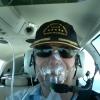Hottest CHT during climb
-
Members Online
- toto
- Schllc
- WilliamR
- Blaze
- Ospeed
- jeremyc209
- TangoTango
- MB65E
- atpdave
- blaine beaven
- 201Steve
- zgasman
- Rmfriday
- NickM20F
- Jarod
- Jsno
- Officer25
- PT20J
- bluehighwayflyer
- pirate
- FlyboyKC
- Rmnpilot
- Iceman7004
- stevesm20b
- gwav8or
- Jarerh
- Ragsf15e
- Slick Nick
- 1980Mooney
- LANCECASPER
- 201er
- donkaye, MCFI
- Aaviationist


Recommended Posts